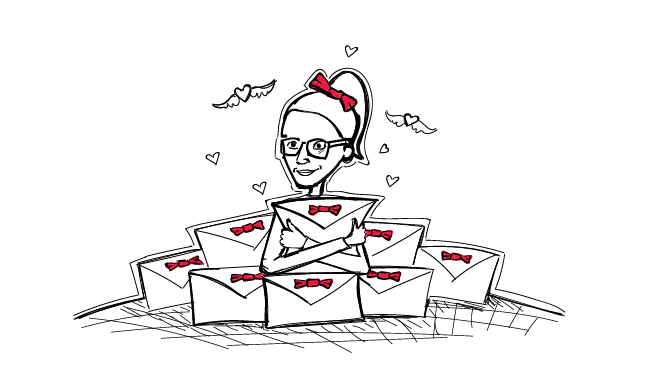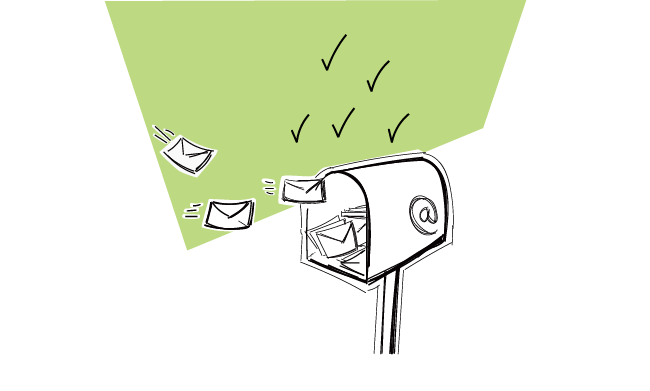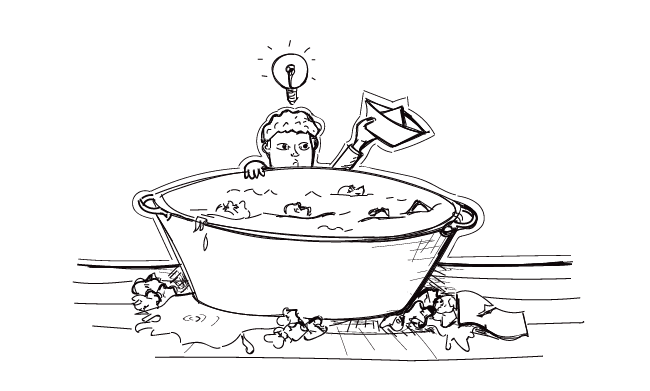You put a lot of hard work into preparing your cold email campaign, yet you get poor results. Hardly anyone opens your emails or very few people reply. You start wondering if your efforts actually make any sense. Sounds familiar? Don’t give up just yet, though. I have some solutions to the most common cold email problems you may face.
Feeling like cold emails don’t work for you
Mastering the art of cold emailing is a matter of trial and error. Keep in mind that you won’t become a pro overnight. Figuring an approach that works best for you is a long process.
Based on our previous post and industry research, I have a few tips for you to begin with:
How to tackle negative reply rates?
- Get rid of a salesy tone. Don’t try to sell at any cost.
- Address your prospect’s needs and how your product can improve their workflow.
- Add context and relevance to your message by mentioning how your solution helped similar companies.
- Avoid clichés and meaningless sentences. Make your email specific and to the point.
- Don’t copy and paste email templates. Impersonal and random messages are unwelcome.
- Don’t overdo with your follow-up sending frequency. Persistency may turn into pushiness sooner than you think. Give your prospects a few days to chew things over. Also, 2-3 follow-ups seem like an optimal number according to our research.
What should you do when hardly anybody replies?
- First, check your email open rate. If it’s very low, your emails may not get delivered to your recipient’s inbox at all. Make sure you do these 14 deliverability checks before the send-out.
- Work on the subject line. You can make it more relevant by addressing the needs of your prospects.
- Don’t make your cold email look like an essay. Focus on the customer and how you can help their business. Cut the fluff. Don’t focus on describing the features of your product or the characteristics of your offer. Instead, show the benefits and the difference your solution can make for their company.
- Remember about a clear call to action. Be explicit about what you want your prospects to do. End your email with a question, but make sure you don’t ask about too much.
- Revise your target group. It’s all about sending the right email, to the right people at the right time. If nobody replies, maybe they aren’t the right match for your product or service.
Why most of the replies are negative?
- What is your average reply turnaround? If it takes you too long to respond, the prospects may lose interest. Remember to strike the iron when it’s hot.
- Don’t leave the prospects to self-service. Sending a link to your website and counting on prospects to buy something is not the purpose of cold emailing. You cold-email your prospects in order to build a new business relationship with them. Engage in the conversation, ask questions and try to learn about their concerns as much as possible.
There’s no silver bullet solution that would take your cold emailing efforts to the next level. Analyze your results and draw conclusions. Treat both the positive and negative replies as feedback. You will work out the best approach with time.
Using the same methods and tactics over and over again
If the whole sales world is buzzing about something, it means it’s already overused and won’t work wonders anymore. The same goes for cold emailing trends. Do you recognize some of the following examples?
- Starting the email with elaborate self-introduction.
- Clickbait subject lines.
- “Just-following-up” type of email.
Don’t fall into one of these patterns.
You can get the prospect’s attention only by standing out from the crowd. Think about it – the decision makers you want to reach out get hundreds of cold emails a week. In many cases, they don’t even open them. Either the subject line catches their eye, or they delete the unknown message without a second thought.
How can you avoid cold email clichés?
- Begin the email with a strong focus on the prospect and their business to add a personal touch and make your message relevant to them from the very first sentence.
- Create a subject line that is in line with the content of your message.
- Treat follow-up emails as your chance to bring additional value. Instead of nudging the prospect to reply to you, send them more examples of how their business can benefit from your solution or mention a use case featuring a company like theirs.
Coming up with an original approach is a hard nut to crack, but the effort and time you put into it will surely pay off.
See what else you should avoid in your emails:
Cold Email Clichés, or What Your Prospects Have Seen Too Many Times to Care >>
Falling for trends
Every now and then new trends spring up like mushrooms. It’s good to be on top of what’s in currently, experiment and test out new approaches, but do it carefully.
Embedding gifs or videos into an email is one of such trends. Undeniably, it’s a great way to catch prospect’s attention. Such a message will stick in the prospect’s memory for long. Especially when you add a personalized video with a special message directed to an individual prospect.
Putting gifs or videos in the body of your cold email may be risky, though.
Some of the email providers don’t allow the images to display by default. The prospect has to manually unblock image display to see your visuals. Some of them may not want to do that, because they associate images sent from an unknown source with spamming (thus the default email provider settings).
Videos may cause troubles too. A very few email clients allow video display. A large email size is a potential issue as well.
Before you send out emails with embedded gif or video, run a few tests to check if the message is displayed properly. Just in case, ensure that the visual is accompanied by text, so even when the prospects can’t see it, they will be able to read the content.
How to approach sending videos and gifs without hurting your deliverability? Read:
What is the Risk of Embedding an Image/Video into B2B Email? >>
Being afraid to run tests and experiment
I mentioned that mastering cold emailing requires conducting some experiments on your own. You may feel anxious that a change to your cold email strategy won’t do any good. Remember, it doesn’t have to be a revolution. Actually, you should start with very small tweaks and test just one element at a time. This is how the A/B tests work.
A/B tests are also called split tests because the idea is to divide a homogeneous prospect group into two smaller batches. Then a separate campaign is created for each test group. The main idea is to make the campaigns identical with only one element that differs. By comparing the results of both campaigns you can identify the one that performed better.
What can you A/B test to improve your campaign’s results?
In order to identify what’s not working, take a closer look at your stats. Generally, there are three rates you should take into consideration while planning your tests.
The open rate
To boost your open rate, test different subject lines and from lines. Many prospects judge the email solely by the subject line. A bad subject line may put you in the same row with spammers, whereas a well-crafted one will spark the addressee’s curiosity. You may also want to experiment with different delivery time. Knowing your prospect’s workflow and email reading habits may help you pick the right timeframe.
The reply rate
To improve the reply rate try testing various versions of your value proposition. The way you present the benefits of your solutions makes a huge difference. Check what pitch appeals to your prospects more. You can also test your own assumptions about the needs of your prospects. Sometimes the results may turn out surprising.
Other elements you may want to test are the email signature and the introduction. Some email clients show the first sentence of your email in the preview before a prospect opens it. Since the introductory sentence works like a sneak peek of your message, it’s crucial to polish it up.
The signature, on the other hand, builds your credibility. If very few people respond to your message, perhaps your signature doesn’t make you look trustworthy enough? It’s worth to test it out!
The positive reply rate
What to do if the replies you receive are mostly negative? Most likely your email copy needs rewriting. Perhaps it’s hard for the prospect to get your point, they see no value for themselves or they can’t see the connection between your message and their business.
Add some tweaks to the content of your email to make it more customer-centric. Switch the focus to what eats your prospects in their daily work routine and how your solution can resolve possible problems making the process easier or faster. Don’t forget about a clear call to action.
A low positive reply rate may be also caused by other factors, such as an unfit target group. Perhaps the assumption about your prospect’s needs wasn’t correct or you targeted a wrong person within the company. Consider reworking your ICP to make sure you direct your message to the right people. Here’s how we did it.
It’s difficult to guess what approach will appeal to your prospects most. A/B testing is a necessity to identify that and take the right direction.
See what else you can A/B test:
My open, reply or interest cold email metrics are low, what can I A/B test? >>
Back to you
Cold email outreach requires some practice before you get it right. To some extent, it’s a matter of experimentation, but you don’t have to walk around in the fog to accidentally find out the best tactics. You can approach it in a more strategic way.
Monitoring your campaign’s statistics should give you a hint about what elements of your cold email outreach could be improved and the A/B tests should get you on the right track.
Experimenting is a core of cold email outreach. If you stick to the same practices for too long, they won’t work as good anymore. The same goes for following trends. If something becomes a buzzing trend, it means it’s already been overused. Always take a critical approach and try to think outside the box.
READ ALSO

Outbound Sales Metrics Demystified – Which Should You Track & Why?
How do you know if your campaigns work or not? The answer is of course: metrics. What outbound sales metrics should you track? What affects delivery rate and what can you do to boost it? What can you change in your email content and settings to get more opens, more (positive) replies, and more customers? In this article, we investigate the most important sales metrics for outbound campaigns.

Why do people hate cold emails & what can you do to make them love yours?
Have you ever wondered why most people hate getting cold emails? We always say we hate them, but can we actually tell why? I think that when we realize the reasons why we hate receiving cold emails, we will be able to write and send cold emails that our addressees won’t actually hate. So why, oh why, do we all hate getting cold emails?

Why We Set up a Separate Mailbox for Outbound Campaigns?
When we were getting about sending our own cold email campaigns, the first thing we did was setting up a new mailbox for each of our sales persons. Those new email accounts have been created on a separate domain and dedicated exclusively to outbound email campaigns. Why did we do that? And how can you do that quickly and conveniently for your own outreach?

